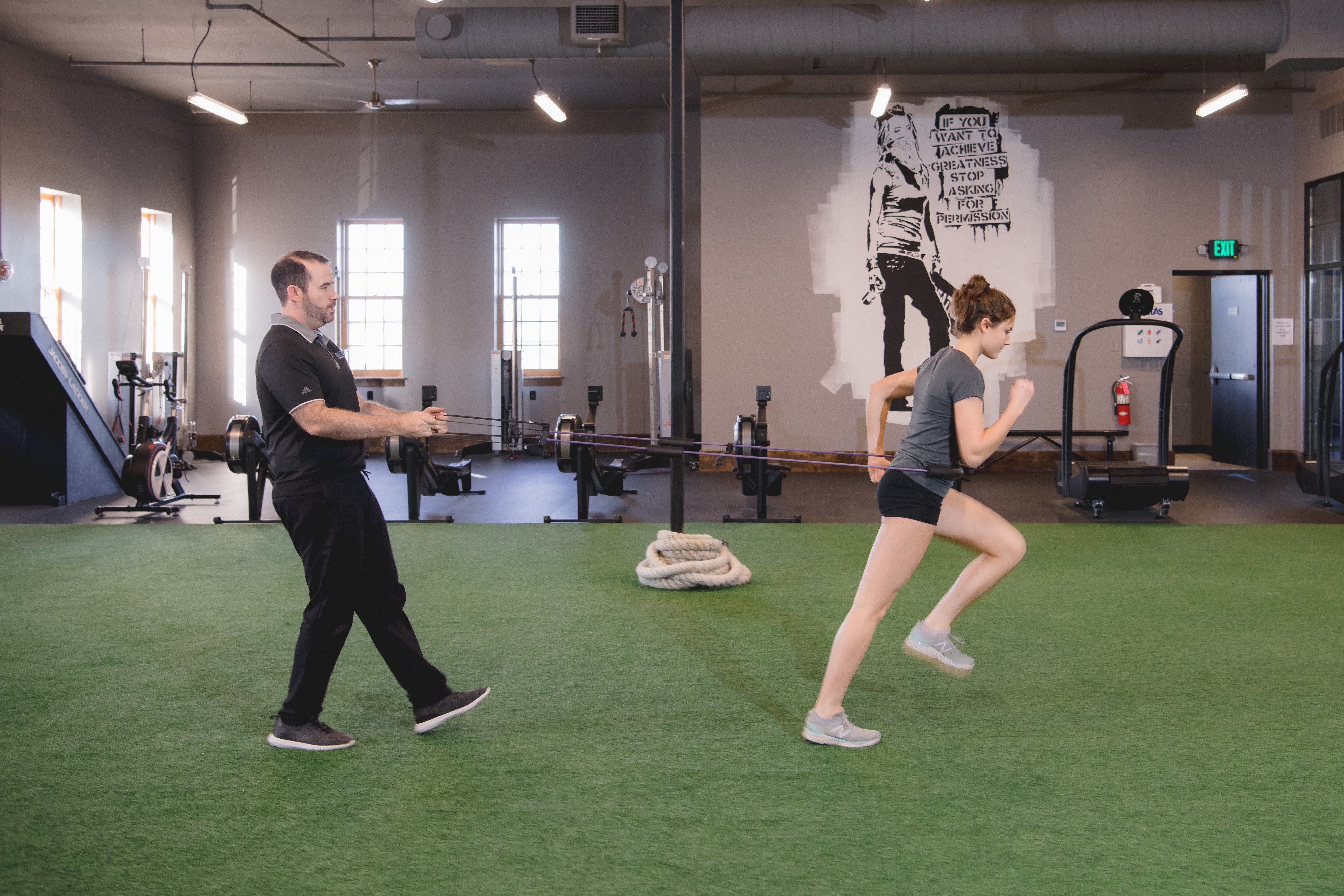
RUNNING Physical Therapy

What You Need to Know
Runners who have experienced injury tend to hear the advice "Just stop running and you'll feel better." While running may have played a role in the injury, our philosophy is not to shut you down and hope the passage of time heals your injury.
Instead, we first assess how you move, your strength and mobility levels, your current training regime, your injury history and more. We use this information to create an individualized program to help you achieve your running goals.
The Runner's Success Roadmap
Here's how it works:
-
Step 1: Identify
-
Step 2: Address & Restore
-
Step 3: Build a Plan
-
Step 4: Maintain

Step 1: Identify

Find the Problem
The first thing we do is find the root cause of your pain or injury. Through the use of strength testing, force plate data and 3-D running analysis, we get a clear picture of what your deficits are and what we need to address through the rehabilitation process to keep you or get you back to running.

Step 2: Address & Restore

Address the Limitations
From there, we build a sturdy foundation and restore base levels of strength and power. Then, we incorporate exercises into your plan that translate to running, such as plyometrics and single-leg activity.

Step 3: Build a Plan

Build a Return-to-Running Plan
Every return-to-running plan is different because runners are different. The Doctor of Physical Therapy you will work with will map out a plan specific to you and educate you on how to progress so that your pain is reduced.
We don’t expect quick fixes with runners where your pain is gone one week and back the next; we seek to build a foundation for long lasting results.
If you work with a running coach, we are happy to communicate our findings and work together to build a plan to improve performance and run pain free.

Step 4: Maintain

Maintain Performance
Once the pain is gone and you are back to running again, one of the most important next steps is to follow a maintenance program to reduce your risk of re-injury or new injury.
We will provide you with a detailed plan that includes a proper warm-up and strength training workouts you can incorporate into your routine to maintain all the hard work you put into physical therapy.
Runners often sustain overuse injuries, but by following a disciplined maintenance program, you can decrease your risk of injury by up to 50 percent!
Ready to start working with
Milwaukee's Running Rehab Experts?
Running with pain should not be your normal way to train. We believe you can enjoy this sport of running pain-free, and we're here to help you get there.
Remember:
- Time does not always heal injuries, nor will it prevent them from returning
- Not all physical therapists specialize in running
- Kinetic can not only help you get out of running in pain, but we can also improve your running through 3D analysis, strength and mobility levels, and more!
Book a free call today to hear how we plan to help you reach your goals.
